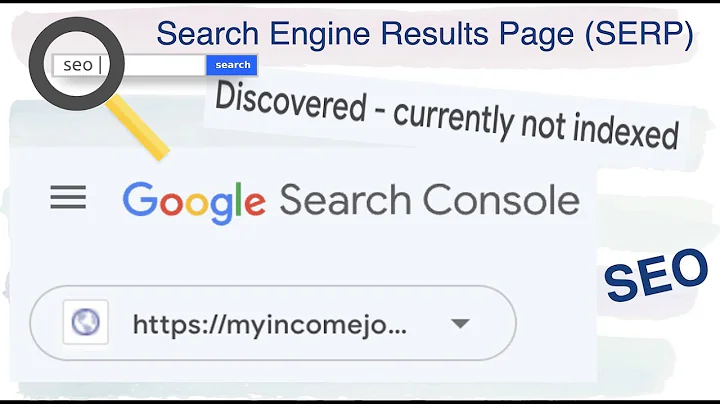Understanding Different Types of SEO Techniques
Table of Contents
- Introduction
- Types of SEO
- White Hat SEO
- Definition
- Techniques
- Black Hat SEO
- Definition
- Techniques
- Grey Hat SEO
- Definition
- Techniques
- White Hat SEO Techniques
- Content Creation and Optimization
- Keyword Research and Analysis
- On-Page Optimization
- Link Building
- Social Media Marketing
- User Experience Optimization
- Black Hat SEO Techniques
- Keyword Stuffing
- Cloaking
- Link Farms
- Hidden Text and Links
- Private Blog Networks (PBNs)
- Article Spinning
- Grey Hat SEO Techniques
- Link Buying
- Link Wheels
- Doorway Pages
- Content Automation
- Duplicate Content
- PBNs - Risks and Benefits
- Pros and Cons of White Hat SEO
- Pros and Cons of Black Hat SEO
- The Importance of Ethical SEO Practices
- Conclusion
🚀 Introduction
In the world of digital marketing, Search Engine Optimization (SEO) plays a crucial role in helping websites rank higher in search engine results pages (SERPs) and attract organic traffic. SEO techniques can be broadly categorized into three types: White Hat, Black Hat, and Grey Hat. Each type follows different strategies and approaches to improve a website's visibility and online presence.
🔍 Types of SEO
1️⃣ White Hat SEO
Definition
White Hat SEO refers to ethical techniques and strategies that align with search engine guidelines and focus on improving the quality and relevance of a website's content. It primarily aims to provide value to users and create a positive user experience.
Techniques
White Hat SEO techniques include content creation and optimization, keyword research and analysis, on-page optimization, link building, social media marketing, and user experience optimization. These techniques focus on delivering high-quality, relevant, and valuable content to users.
2️⃣ Black Hat SEO
Definition
Black Hat SEO involves using aggressive and unethical techniques to manipulate search engine algorithms and gain higher rankings in SERPs. It disregards search engine guidelines and focuses solely on achieving quick results, often at the expense of user experience.
Techniques
Black Hat SEO techniques include keyword stuffing, cloaking, link farms, hidden text and links, private blog networks (PBNs), and article spinning. These techniques aim to exploit search engine algorithms and artificially inflate a website's rankings.
3️⃣ Grey Hat SEO
Definition
Grey Hat SEO falls somewhere between White Hat and Black Hat SEO. It involves using techniques that are not explicitly prohibited by search engines but are still questionable in terms of ethics and guidelines compliance.
Techniques
Grey Hat SEO techniques include link buying, link wheels, doorway pages, content automation, duplicate content, and the use of PBNs. These techniques carry some level of risk and may lead to penalties if abused.
💡 Pros and Cons
Pros of White Hat SEO:
- Long-term sustainability
- Builds a positive brand image
- Improves user experience
- Establishes credibility and trust
- Adheres to search engine guidelines
Cons of White Hat SEO:
- Typically slower results compared to Black Hat techniques
- Requires more effort and time investment
- Potentially higher competition for top rankings
Pros of Black Hat SEO:
- Potentially quick results and higher rankings
- Lower competition for certain keywords
- Cost-effective for short-term gains
Cons of Black Hat SEO:
- High risk of penalties and permanent bans from search engines
- Damages brand reputation and trust
- Poor user experience and irrelevant content
- Short-lived success
❗ The Importance of Ethical SEO Practices
In today's digital landscape, ethical SEO practices are more critical than ever. Search engines like Google constantly update their algorithms to prioritize user experience and weed out websites that engage in manipulative or deceptive tactics. It is essential to focus on providing valuable content, optimizing for user experience, and adhering to search engine guidelines to build a sustainable online presence.
🎯 Conclusion
Choosing the right SEO approach is crucial for the success and longevity of a website. While it may be tempting to take shortcuts and resort to Black Hat techniques for quick results, the risks and long-term consequences outweigh the benefits. White Hat SEO, with its focus on ethical practices and user-centric strategies, offers a sustainable and effective way to improve search engine rankings and attract organic traffic.
Highlights:
- Different types of SEO techniques (White Hat, Black Hat, and Grey Hat)
- Pros and Cons of White Hat and Black Hat SEO
- The importance of ethical SEO practices
- Sustainable SEO strategies for long-term success
FAQ
Q: What is the difference between White Hat and Black Hat SEO?
A: White Hat SEO follows ethical practices and focuses on creating high-quality, relevant content for users. Black Hat SEO involves unethical techniques that manipulate search engine rankings and prioritize quick results over user experience.
Q: Is Black Hat SEO worth the risk?
A: While Black Hat SEO techniques may offer short-term benefits, they carry a high risk of penalties and permanent bans from search engines. It is better to invest in sustainable and ethical SEO practices for long-term success.
Q: Why is ethical SEO important?
A: Ethical SEO practices are important for building a positive brand image, establishing credibility, and improving user experience. Search engines prioritize websites that provide value to users and penalize those that engage in manipulative tactics.
Resources:







